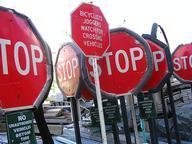Quiz Answer Key and Fun Facts
1. The Locomotive Act 1865 was otherwise known by what name?
2. What was the maximum speed allowed for self-propelled motor vehicles under the terms of the Locomotive Act 1865?
3. In 1896, with the passing of the Locomotives on Highways Act, a new class of "light vehicles" was created. What was the maximum unladen weight of these supposedly light vehicles?
4. To celebrate the introduction of the "Locomotives on Highways Act 1896" (also known as the "Emancipation Act"), Henry J Lawson instituted which annual event?
5. Which of the following was NOT introduced by the 1903 Motor Car Act?
6. In which year was the Highway Code first introduced?
7. What were Belisha Beacons?
8. What kind of animal was Tufty Fluffytail?
9. With the development of faster and faster cars, the newly built motorways encouraged some drivers to go at lunatic speeds. In which year was the current 70mph national speed limit passed by Parliament?
10. In 1972, it was made compulsory for all motorcyclists in the UK to wear what?
11. The appearance of what tells pedestrians it is safe to cross the road at a Pelican crossing?
12. Under the Green Cross code, what were you meant do once you had thought carefully and found somewhere safe to cross the road?
13. Lieutenant Commander "Bill" Boaks was an eccentric gentlemen who stood for Parliamentary election many times. He often stood as the "Air, Road, Public Safety, White Resident" candidate. He died in 1986. How did he die?
14. In an effort to discourage illegal parking, the UK traffic authorities introduced wheel clamps to be fitted to offending vehicles. What do Americans call these devices?
15. As a result of the safety measures introduced over the years, and advances in technology to do with car manufacture (ABS brakes, crumple zones, etc), UK road deaths have come down substantially. How many died on Britain's roads in 2004
Source: Author
talbotbruno
This quiz was reviewed by FunTrivia editor
TabbyTom before going online.
Any errors found in FunTrivia content are routinely corrected through our feedback system.

